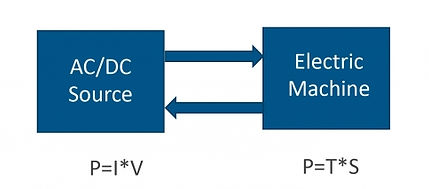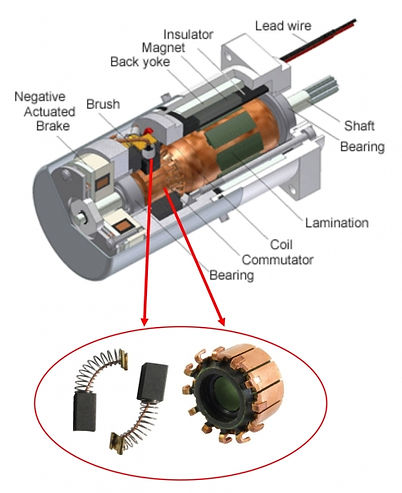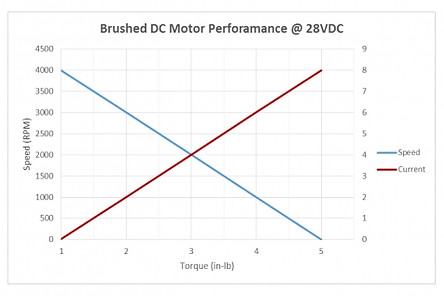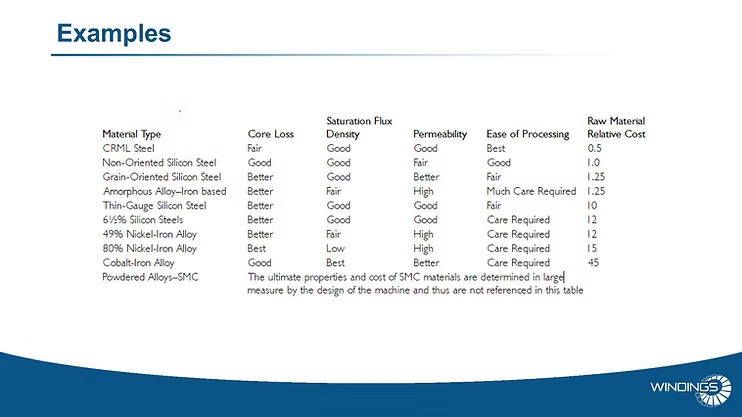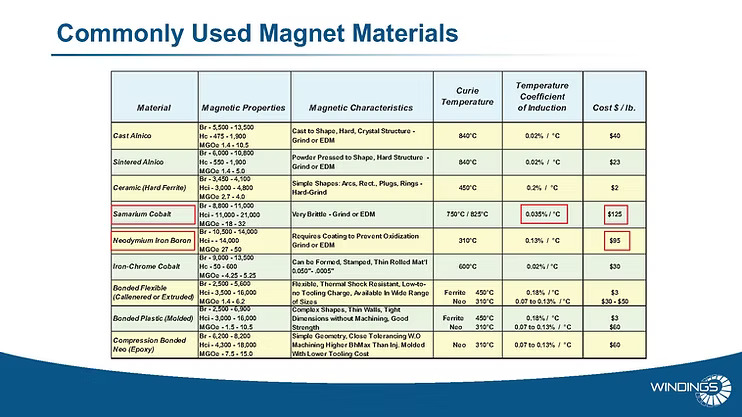Electric Machines
Electric machine – transducer for converting electrical energy to mechanical energy or mechanical energy to electrical energy.
Types of Electric machines:
- Motors
- Generators
- Sensors
- Electromagnets
- Electromagnetic Amplifiers, etc.
Common Electric Motor Types
- AC Induction Motor
- Squirrel Cage
- Wound Field
- Brushed DC Motor
- AC Synchronous Motor
- Permanent Magnets
- Wound Field
- Switched Reluctance Motor
- Linear Motor
- Flat
- Tubular
- Stepper Motor
- Permanent Magnet (PM)
- Variable Reluctance (VR)
- Hybrid Stepper
- Linear
Brushed DC Motor Construction & Performance
- Easy to predict motor performance
- Simple, inexpensive control electronics
- Use of a feedback device is optional
- Difficult to design brush system
- Limited availability of the brush system components
- Very difficult to predict brush life
- Not a motor of choice for high-performance application
- Manufacturing cost very low for mass production, when fully tooled
Typical Applications for Brushed DC Motors
- Appliances
- Hand Tools Automotive
- Manufacturing Military and Commercial Aerospace Manufacturing
- Autopilot/Auto-throttles
- Fin Controls
- Gimbals
- Optics & Radars
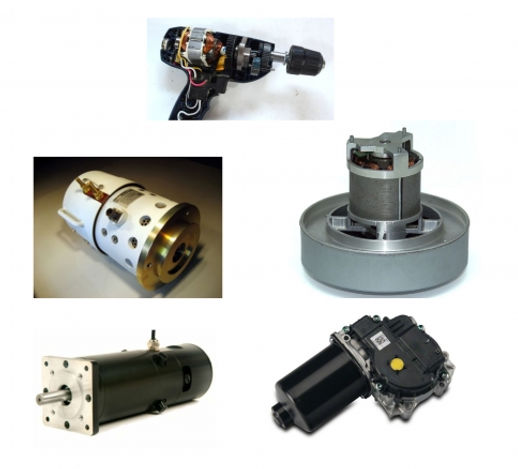
AC Induction Motor Construction & Performance
- Easy to predict motor performance
- Simple, inexpensive control electronics
- Use of a feedback device is optional
- Difficult to design brush system
- Limited availability of the brush system components
- Very difficult to predict brush life
- Not a motor of choice for high-performance application
- Manufacturing cost very low for mass production, when fully tooled

Typical Applications for Brushed DC & AC Induction Motors
- Appliances
- Hand Tools Automotive
- Manufacturing Military and Commercial Aerospace Manufacturing
- Autopilot/Auto-throttles
- Fin Controls
- Gimbals
- Optics & Radars

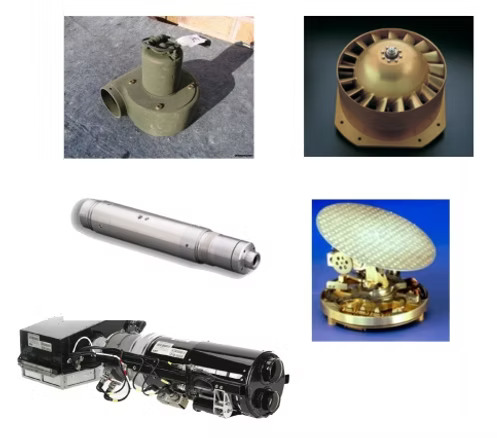
Hybrid Stepper Motor Construction & Performance
- Difficult to predict motor performance, based on design experience
- Attractive for some space applications when feedback device not required
- Can require precision lamination stamping
- Motor winding similar to a brushless DC design
- Manufacturing cost very low for mass production, when fully tooled

Typical Applications for Stepper Motors
- Low Precision Positioning without Feedback Device
- Positioning Optical Filter/Lenses with Feedback Device
- Robotic Joint Positioning
- Pan & Tilt Assemblies
- Low Power, Low Speed Scanners
- Radar Drives (limited rotation, low inertia or power)
- 3D Printers
- Proportional Valves — Hydraulic, Fuel Control etc.

Brushless DC Motor Construction & Performance
- Easy to predict motor performance, however extremely drive/controller dependent
- Motor of choice for new and/or high-performance applications
- Very high power density
- Very high speeds
- Very high efficiency
- Requires a feedback device
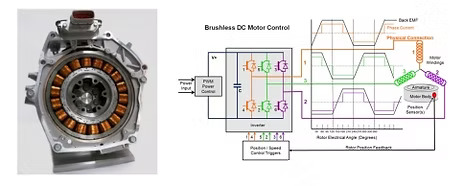
Typical Applications for Brushless Motors
- Highest Performance Applications
- Fin Controls
- TVC Controls
- Multi-Mode Radar Drives
- Weapons Gimbals
- Turret Drives
- Primary & Secondary Flight Controls
- High speed / High Power Pumps & Fans
- Vehicle Traction Drives
- High Reliability and Storage Life
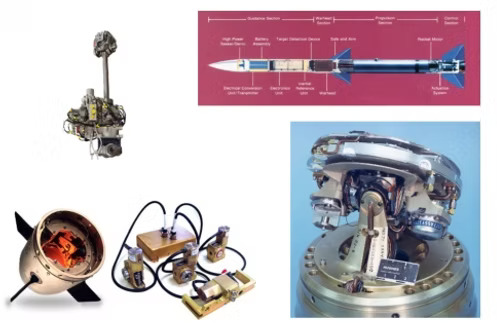
Switched Reluctance Motor Construction & Performance
- Appliances
- Hand Tools
- Automotive Manufacturing
- Locomotive Traction
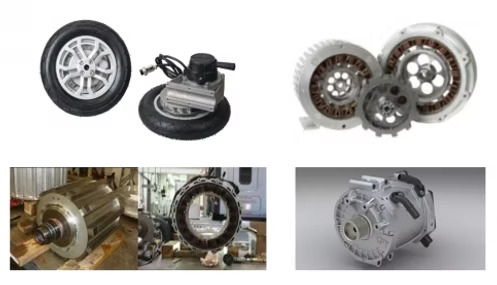
Linear Motor Construction & Performance
- Easy to predict motor performance
- Very high speeds
- Very high precision
- Best for light/low inertial loads
- Limited travel lengths
- Motor of choice for new and/or high-performance applications
- Manufacturing cost high
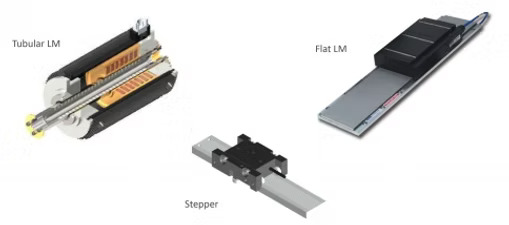
Typical Applications for Linear Induction Motors
Small Linear Motors
Semiconductor Manufacturing
Flat Panel Manufacturing
Conveyor Systems
Airport Baggage Handling
Accelerators and Launchers
Pumping of Liquid Metal
Large Linear Motors
Transportation (Low & Medium Speed Trains)
Sliding Doors Closure (Malls, Metros)
People Movers
Material Handling and Storage
Commonly Used Sensors
Industrial Servo motors
Aerospace and Military
Down hole oil and gas exploration
Applications with high temperature and mechanical vibration requirements
Difficult to predict performance
Difficult to achieve high accuracy due to manufacturing variances
Manufacturing cost can be low in mass production, when fully tooled
No new development, mainly second source by matching resolver performance
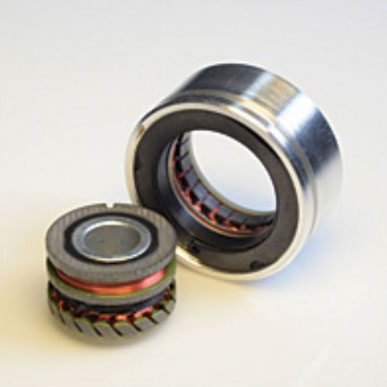
Electromagnets/Solenoids
- Industrial
- Magnetic mechanical support
- Automotive
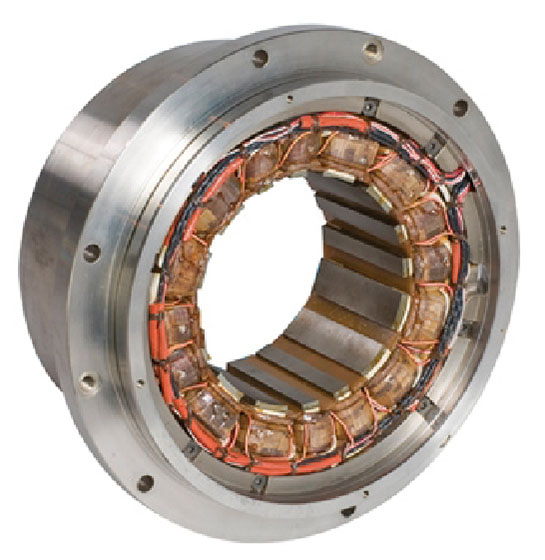
Commonly Used Materials
Magnetic Materials
- Carbon steels
- Stainless steel
- Silicon steels
- High saturation alloys
- Amorphous ferromagnetic alloys
- Soft magnetic powder composites
- Nanostructured materials
- Ceramic
- Alnico
- Rare Earth
Dielect Materials
- Paper
- Epoxy
- Plastic
Magnet Wire
- Copper
- Aluminum
- Litz
Commonly Used Magnet Wire
- Conductor
- The most suitable materials for magnet wire applications are unalloyed pure metals, particularly copper
- High-purity oxygen-free copper grades are used for high-temperature applications
- Aluminum magnet wire is sometimes used as an alternative for transformers and motors. Because of its lower electrical conductivity, aluminum wire requires a 1.6-times larger cross sectional area than a copper wire to achieve comparable DC resistance.
- Insulation
- Modern magnet wire typically uses one to four layers of polymer film insulation, often of two different compositions, to provide a tough, continuous insulating layer.
- Classification
- Magnet wire is classified by diameter (AWG /SWG or millimeters) or area (square millimeters), temperature class, and insulation class
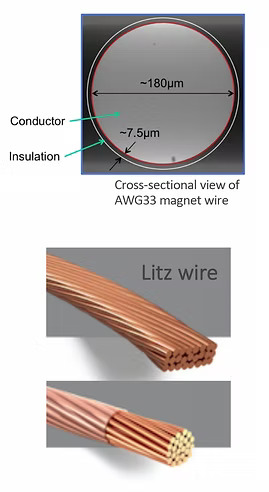
Stator's Most Common Constructions
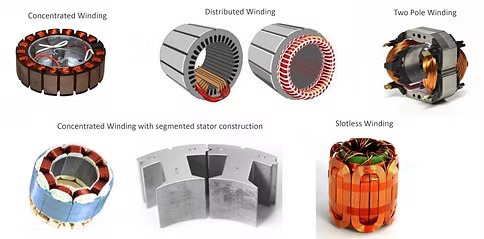
Rotor's Constructions
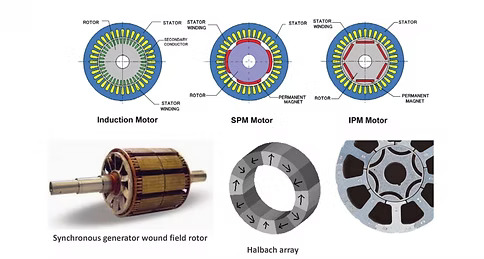
Electric Machine Parameter & Testing - Part 1
- Mechanical Dimensions
- Geometric Dimensioning and Tolerancing (GD&T) is a system for defining and communicating engineering tolerances. It uses a symbolic language on engineering drawings and computer-generated three-dimensional solid models that explicitly describes nominal geometry and its allowable variation. It tells the manufacturing staff and machines what degree of accuracy and precision is needed on each controlled feature of the part.
- GD&T is used to define the nominal (theoretically perfect) geometry of parts and assemblies, to define the allowable variation in form and possible size of individual features, and to define the allowable variation between features.
- ASME standards ASME Y14.5 – Dimensioning and Tolerancing
- ISO TC 10 Technical product documentation
- ISO/TC 213 Dimensional and geometrical product specifications and verification
Electric Machine Parameter & Testing - Part 2
- Electrical parametersExample:
- Measure and record A-B, B-C, C-A line-line resistances and inductances.
- Hipot and surge test the stator after varnish at 1800VAC, max current leakage 5mA Before and after varnish, perform corona test(partial discharge) with pulse up to but not exceeding 3000V.
- Resistance
- The electrical resistance of an electrical conductor is the opposition to the passage of an electric current through that conductor. Electrical resistance shares some conceptual parallels with the mechanical notion of friction. The SI unit of electrical resistance is the ohm (Ω)
- Inductance
- Inductance is a property of an electrical conductor which opposes a change in current. The Henry (symbol: H) is the SI derived unit of electrical inductance
Electric Machine Parameter & Testing - Part 3
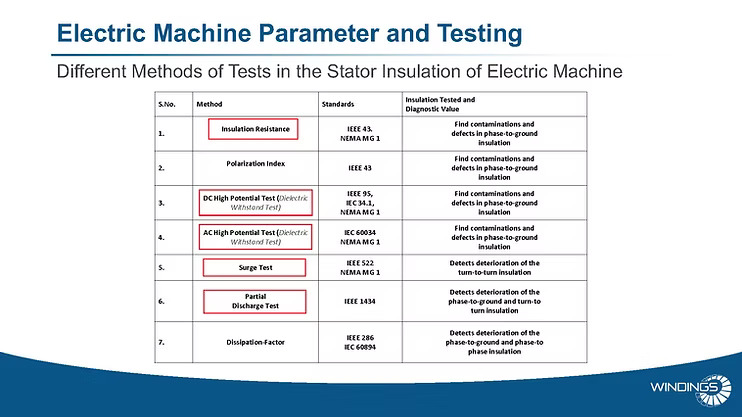
Electric Machine Parameter & Testing
- High Potential Test
- Three types of High Potential Test tests are commonly used. These three tests differ in the amount of voltage applied and the amount (or nature) of acceptable current flow:
- Insulation Resistance test measures the resistance of the electrical insulation between the copper conductors and the core of the stator. Ideally, this resistance should be infinite. In practice, is not infinitely high. Usually, lower the insulation resistance, it is more likely that there is a problem with the insulation. Dielectric Breakdown Test. The test voltage is increased until the dielectric fails, or breaks down, allowing too much current to flow. The dielectric is often destroyed by this test so this test is used on a random sample basis. This test allows designers to estimate the breakdown voltage of a product’s design and to see where the breakdown occurred.
- Dielectric Withstand Test. A standard test voltage is applied (below the established Breakdown Voltage) and the resulting leakage current is monitored. The leakage current must be below a preset limit or the test is considered to have failed. This test is non- destructive providing that it does not fail and is usually required by safety agencies to be performed as a 100% production line test on all products before they leave the factory.
IEEE Std 43-2000IEEE Recommended Practice for Testing Insulation Resistance of Rotating Machinery
Electric Machine Parameter & Testing - Part 4
- Surge Test
- If the turn insulation fails in a form-wound stator winding, the motor will likely fail in a few minutes. Thus the turn insulation is critical to the life of a motor. Low voltage tests on form-wound stators, such as inductance or inductive impedance tests, can detect if the turn insulation is shorted, but not if it is weakened. Only the surge voltage test is able to directly find stator windings with deteriorated turn insulation. By applying a high voltage surge between the turns, this test is an overvoltage test for the turn insulation, and may fail the insulation, requiring bypassing of the failed coil, replacement or rewind.
Electric Machine Parameter & Testing - Part 5
- Partial Discharge TestIEC TS 60034-27For many years, the measurement of partial discharges (PD) has been employed as a sensitive means of assessing the quality of new insulation as well as a means of detecting localized sources of PD in used electrical winding insulation arising from operational stresses in service. Compared with other dielectric tests (i.e. the measurement of dissipation factor or insulation resistance) the differentiating character of partial discharge measurements allows localized weak points of the insulation system to be identified. The PD testing of rotating machines is also used when inspecting the quality of new assembled and finished stator windings, new winding components and fully impregnated stators.
- The measurement of partial discharges can also provide information on: points of weakness in the insulation system; ageing processes; further measures and intervals between overhauls.
- Although the PD testing of rotating machines has gained widespread acceptance, it has emerged from several studies that not only are there many different methods of measurement in existence but also the criteria and methods of analyzing and finally assessing the measured data are often very different and not really comparable. Consequently, there is an urgent need to give some guidance to those users who are considering the use of PD measurements to assess the condition of their insulation systems.
- The measurement of partial discharges can also provide information on: points of weakness in the insulation system; ageing processes; further measures and intervals between overhauls.
Electric Machine Parameter & Testing - Part 5
- NEMA National Electrical Manufacturers Association
- NEMA sets standards for many electrical products, including motors. For, example, “size 11” mean the mounting face of the motor is 1.1 inches square
- Standards Publication ICS 16 standard covers the components used in a motion/position control system providing precise positioning, speed control, torque control, or any combination thereof. Examples of these components are control motors (servo and stepping motors), feedback devices (encoders and resolvers), and controls.
- IEC International Electro technical Commission
- IEC 60034 is an international standard for rotating electrical machinery
- IEC 60034-1 Rating and Performance
- ISO International Organization for Standardization
- ANSI American National Standards Institute
- ASTM American Section of the International Association for Testing Materials
- REACH Registration, Evaluation, Authorization and Restriction of Chemicals
- RoHS Restriction of Hazardous Substances Directive
- DO-160 Environmental Conditions and Test Procedures for Airborne Equipment is a standard for the environmental testing of avionics hardware. It is published by the Radio Technical Commission for Aeronautics (RTCA, Inc.)
- MIL-STD-810, Environmental Engineering Considerations and Laboratory Tests, Published by the United States Department of Defense
- ITAR The International Traffic in Arms Regulations and the Export Administration Regulations (EAR) are two important United States export control laws that affect the manufacturing, sales and distribution of technology.
- AS9001 Quality Management Systems – Requirements for Aviation, Space and Defense Organizations
- AS9002 Aerospace First Article Inspection Requirement
- ISO/TS 16949 common automotive quality system requirement based on ISO 9001 and customer specific requirements from the automotive sector
